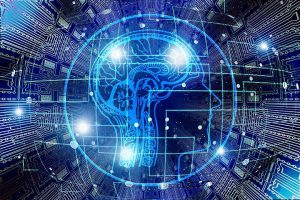The Origin of IoT
The concept of IoT is generally summarized in that it is about turning everyday objects into sources of information that are connected to the network. But how and when did the IoT really emerge?
The term has its origin at the end of the last century, specifically in 1999, when Kevin Ashton, director of Procter & Gamble, had the initiative to create a group of researchers called the Auto-ID Center at the Massachusetts Institute of Technology (MIT), which They were dedicated to finding out information about Radio Frequency Identification Network (RFID) and sensor technologies.
This being the origin, we can specify the definition of the IoT concept in a collection of unlimited objects permanently connected in a digital setting that aspire to make everything intelligent by managing large amounts of information.
But if we want to fully understand the origin and scope of the IoT, it would be a mistake to focus solely on the activity of recent years. It is convenient to take a step back and take a look at the past, analyzing how the different technological evolutions have inevitably brought us to this point.
It dates back to the 19th century, in what are considered the first telemetry experiments in history. The first record was made in 1874 by French scientists. They installed meteorological and snow depth information devices on top of Mont Blanc.
The idea of being able to connect objects and that they were intelligent was already reflected at that time in the thoughts and writings of such notable scientists as Nikola Tesla or Alan Turing. His words, read from a historical perspective, now make sense and show just how ahead of his time.
However, the advancement of this network of networks was slow during the 70s and 80s for several reasons, the main one being the lack of fast and low-cost communications over medium and long distances, which facilitated the creation of heterogeneous networks, totally incompatible with each other. It wasn’t until the mid-1990s that the commercial and universal Internet began its ultimate expansion. Silos were interconnected using a communications protocol, the famous TCP / IP, the foundation of the Internet, and non-standard implementations began their decline. In this way, the military and academic network that was ARPANET became the INTERNET and with it the origin of countless new social and business models.
And it was before the popularization of this incipient Internet that the idea of connecting objects through this network soon began to become popular. Back in 1990 John Romkey, at the Interop event in the United States, created the first object connected to the Internet: a toaster that could be turned on or off remotely. The connectivity was through the aforementioned TCP / IP protocol and the control was done through SNMP (Simple Network Management Protocol), a network management protocol, which was used to control the turning on and off of the device.
But the revolution came hand in hand with the popularization of wireless connectivity, whether cellular or WiFi, at the beginning of the 21st century. This finally allowed us to witness a first explosion in the growth of connected objects. And this growth has been seen especially in the last decade, where new concepts such as WSN (Wireless Sensor Networks) or M2M (Machine to Machine) have been produced, to finally give way to the IoT that we all know.
The IoT journey is still a long way to go, its applications are infinite and to be exploited for the benefit of the information that can be processed. With more interconnected objects, more information will be flowing from these simple systems to large databases, where correlations can be made and the right decisions can be made.




